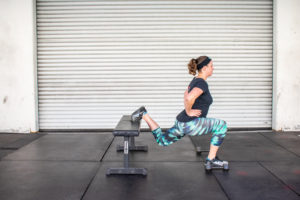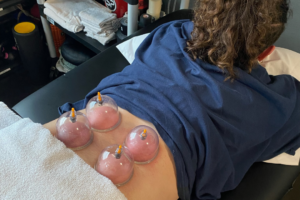
Have you ever dealt with a nagging pinch in front of your hip? It’s even more frustrating when it hurts to walk, run, squat, or sit for long periods. Not only is it annoying to deal with but it could lead to compensations that contribute to low back or knee pain. In the last month, I’ve seen several clients dealing with this issue. Luckily, solutions can be straight forward and I’m here to lend some guidance to address this issue!
First off, we have to talk about the hip’s anatomy. The hip joint is one of the MOST stable joints in the body with MULTIPLE layers of connective tissue from the capsule, ligaments, and muscles. Similar to the shoulder, the hip is a ball-and-socket joint but the shoulder is more of a golf ball on a tee versus the hip has a ball that sits nicely into its socket.
With all of these different layers, the hip can impinge on any of the soft tissue structures or even butt up into the bony anatomy of the socket or femoral neck particularly while bringing the knee up towards the chest. This is commonly known as Femoral Acetabular Impingement or FAI. This doesn’t necessarily mean the hip is dysfunctional with this impingement however, this can be exacerbated and pain can occur when the hip accepts a load that the joint or the muscles isn’t accustomed such as a heavy squat, that longer than normal run, or from a specific trauma such as a fall.
Now we all have a basic understanding of the hip’s anatomy, I want to provide some solutions for your problem! Here are 3 tips to consider to get over that pinchy hip and to get back to normal day to day activity!
Understand what movements cause the pinchiness! Once you know what movements are pinchy, you need to ensure you’re not constantly pushing into that pinchiness. The idea is to take away that aggravating feeling so that you give your body time to go through the natural stages of healing. Think of it as a scab and you shouldn’t be constantly picking at it.
It’s all about the glutes! The glutes promote proper hip mechanics and its ability to sit into the socket while your knees come to your chest moving into hip flexion. Not only do I see stability and strength deficits with pinchy hips but also in clients with low back pain and knee pain. Getting the glutes big and strong knocks out 2 birds with 1 stone!
Be patient with the process! Depending on how acute or chronic the pinchiness is will dictate how long the recovery process will be. Working with a Physical Therapist can help to determine that timeline, identify the deficits and restrictions causing the issue, and ease you back into your sport or exercise the right way.
Don’t let your pinchy hip stop you from living a healthy, active lifestyle. I hope these tips were helpful and remember, movement is medicine so never stop training!
As always, we hope this helps you and if you need anything from me, or the team at Sports Performance, email us at TeamSP@SportsPerformancePT.com….or text us! You can reach us at (619) 724 – 4427.
-Dr. Jason

STAY CONNECTED
Instagram: CLICK HERE
Facebook: CLICK HERE
YouTube: CLICK HERE
Podcast: CLICK HERE
TUNE IN TO OUR PODCAST













